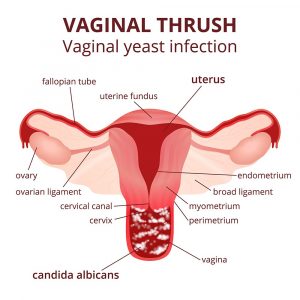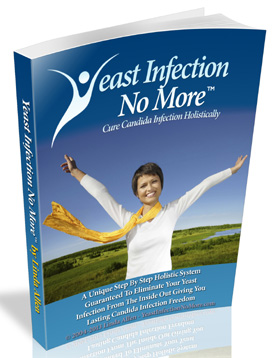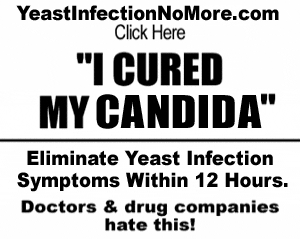Yeast Infection No More Review: A yeast infection is a common fungal infection that can occur when there is too much yeast in the vagina. It most commonly affects the vagina and vulva, but also the penis and other parts of the body.
Vaginal yeast is normal and healthy. Bacteria usually prevent this yeast from overgrowth. However, if something happens and the balance of these bacteria is thrown off, a specific type of yeast called Candida can overgrow and cause a yeast infection. Mild fungal infections often clear up in a few days, but more serious infections can last up to two weeks.
- Itching, pain and irritation in the vagina and vulva
- Burning during urination or intercourse
- Thick white discharge resembling cottage cheese
Yeast Infection No More is a system designed to help individuals fight Candida yeast infections.It is advanced and backed by science. Also, learn about Candida yeast infections. Why and how to get it. The main claim of this program is that it helps users get rid of candida overgrowth.Read this yeast infection no more review to learn more about the program.
What is the Yeast Infection No More System?
Yeast Infection No More is a clinically proven 5-step multi-step Candida overgrowth healing system honed and perfected in over 12 years of trial and error research.
It is a laser-targeted combination of a series of powerful protocols designed in a unique order and time to eliminate Candida overgrowth, restore intestinal balance of you and thus permanently free you from any kind of yeast infection of any severity.
You see, Candida overgrowth is a serious condition that can lead to dangerous health complications if left untreated. When the fungus Candida albicans changes from its nonpathogenic to pathogenic form, it produces root-like structures called rhizoids, which penetrate the intestinal wall and create holes in the intestinal wall.
This allows toxic waste, bacteria and undigested food to enter the bloodstream causing many dangerous conditions such as:
leaky gut syndrome, severe skin rash, brain fog, acid reflux, memory loss, joint pain, severe inflammation and yeast in the sinuses and lungs. It can have a negative effect on our brain and significantly interfere with our biochemical processes.
That’s why Linda Allen, medical researcher, speaker, and author from Irvine, California (USA), founded the Yeast Infection No More 5-Step System to share this important information. After suffering from a systemic yeast infection for over a decade and after 12 years of research, trial and error, Linda has helped more than 143,958 women and men in 157 countries around the world discover the key to recovery. restore intestinal balance, eliminate candida overgrowth and achieve permanent freedom. of all types of yeast infections.
What is a yeast infection?
A vaginal yeast infection is a fungal infection that causes inflammation, discharge, and severe itching in the vagina and vulva (the tissue at the opening of the vagina).
Vaginal yeast infection, also known as vaginal candidiasis, affects three out of four women at some point in their lives. Many women go through at least two episodes of her.
Vaginal yeast infection is not considered a sexually transmitted disease. However, there is an increased risk of vaginal yeast infection at the time of the first regular sexual activity. There is also some evidence that infections may be associated with oral genital contact (orogenital intercourse).
medicines can effectively treat vaginal yeast infections. If you have four or more recurring yeast infections per year, you may need a longer treatment cycle and maintenance schedule.

What causes yeast infections?
Yeast infections are a common condition that can affect both men and women. Though they are usually associated with women, men can also suffer from yeast infections, though this is relatively rare. Yeast infections are caused by an overgrowth of the Candida fungus, which is a type of yeast that is normally present in the body.
There are several things that can cause an overgrowth of Candida, including taking certain antibiotics, having a weakened immune system, and suffering from chronic stress. Yeast infections can be uncomfortable and inconvenient, but they are usually not serious. However, if left untreated, yeast infections can sometimes lead to more serious health problems.
Vaginal yeast infection, sometimes called vulvovaginal candidiasis, occurs when healthy yeast that normally lives in the vagina grows out of control. It often causes itching and other irritating symptoms. The medical name for yeast infections is “candidiasis”. Because this is usually caused by a type of yeast called Candida.
If the vaginal chemistry is out of whack, the normal yeast that lives in the vagina can overgrow and cause infections.
- Normal changes in hormone levels (like during your menstrual cycle)
- Antibiotics, cortisone, and other drugs
- Pregnancy
- Diabetes
- A weak immune system a natural reaction to another person’s genital chemistry
Natural reaction to other people’s genital chemistry. It can cause redness and irritation to the penis and scrotum.
Yeast infection is not a sexually transmitted disease. They are not contagious and cannot be passed on to other people through sex. But sexual contact can lead to yeast infections — your body’s chemicals react badly to other people’s natural genital yeast and bacteria, which can cause the yeast to overgrow.
You may also get a fungal infection of your mouth, throat, or tongue. This is called “thrush”.
What are yeast infection symptoms?
Yeast infections often cause thick, white, lumpy vaginal discharge that is usually odorless (or smells slightly different than usual). A whitish coating may also be seen.
Most yeast infections cause itching, burning, and/or redness in or around the vagina. Vaginal itching usually gets worse the longer the infection lasts. Sex can be uncomfortable or painful. In extreme cases, tears and sores may form in the vagina and vulva. If the irritation is strong, it may sting when you pee.
- Itching and irritation in the vagina and vulva
- A burning sensation, especially during intercourse or while urinating
- Redness and swelling of the vulva
- Vaginal pain and soreness
- Vaginal rash
- Thick, white, odor-free vaginal discharge with a cottage cheese appearance
- Watery vaginal discharge.
- Trouble getting an erection (or difficulty achieving orgasm)
How do I treat yeast infections?
Yeast infections are usually easily treated with antifungal drugs in a few days. Medicated creams or suppositories for yeast infections (such as Monistat and other brands) are available at pharmacies without a prescription. Please use A single swallowed pill (called diflucan or fluconazole) can also treat fungal infections.You need a doctor’s prescription to get medicine for yeast infections.
Do not have vaginal or oral sex or insert anything into the vagina until treatment is complete and the infection has healed. Friction from sex can cause more irritation and make healing more difficult.In addition, some medicines used inside the vagina contain oils that can cause condoms to break. there is.
Yeast infections can be very itchy, but avoid scratching. It can exacerbate inflammation or cut the skin, allowing bacteria to spread and infections to increase. There are over-the-counter creams that can be used on the vulva to relieve irritation. Your doctor can also give you tips to help relieve the burning and itching.
If symptoms persist for more than a week after stopping treatment, talk to your nurse or doctor to check your situation. May require further treatment or something else may be causing irritation
Preventing Yeast Infections
If you’re like most people, you know that yeast infections suck. They can be really uncomfortable and embarrassing, and they can take a long time to clear up. In fact, one study found that women who have recurrent yeast infections are 6 times more likely to develop Crohn’s disease than those who don’t get them.
So what can you do to prevent them from happening in the first place?
There are a few things that you can do to help reduce your risk of getting yeast infections:
- Clean your genital area thoroughly after every sex act. Wash inside and out with soap and water, use an antibacterial gel or cream if needed, and avoid douching or using harsh chemicals on the area.
- Avoid eating foods containing high levels of sugar or alcohol. These foods will promote Candida overgrowth (a type of fungus), which is linked directly with yeast infection symptoms such as itchiness and burning sensations down there.
- Keep your immune system healthy by taking probiotics daily (if desired) and boosting your intake of vitamin D during the winter months.
- Avoid Tight-fitting pantyhose
- Douching, which removes some of the normal bacteria in the vagina that protect you from infection
- Scented feminine products, including bubble bath, pads, and tampons.
- Hot tubs and very hot baths
- Unnecessary antibiotic use, such as for colds or other viral infections
- Staying in wet clothes, such as swimsuits and workout attire, for long periods of time—
What causes a vaginal yeast infection before your period?
A healthy vagina contains a balanced mix of yeast and bacteria. The same hormonal changes that trigger menstruation can also trigger an imbalance of the yeasts and bacteria that naturally live in the vagina.
An overgrowth of a type of fungus called Candida can lead to a yeast infection. There are several strains of Candida that can cause a yeast infection. The most commonTrusted Source strain is called Candida albicans.
Risk of yeast infection every month due to hormonal fluctuations and an imbalance in the vaginal flora. A very small dated study found that more than half of women with a yeast-bacteria imbalance in the vagina started at the beginning of their period. According to the authors of the 2021 study, an average of 59% of women will have candidiasis at some point in a given year, and an average of 33% of women will have multiple candidiasis infections. Year.
How is a vaginal yeast infection diagnosed?
To test for yeast infection, doctors first ask about your medical history. Yeast infections often come back, so your doctor will want to know what yeast infections you had before. Doctors may also ask whether people have had sexually transmitted infections in the past.
Your doctor will perform a vaginal examination. This includes looking both inside and outside the vagina for symptoms.
Finally, your doctor may swab some vaginal fluid for testing. They use samples to try to identify the exact strain of fungus that is causing the infection.This helps doctors create the most effective treatment plan for yeast infections.
How can you treat a vaginal yeast infection at home?
There are some simple home remedies that, when combined with your doctor’s treatment, can speed recovery.
- Plain Greek yogurt: Studies suggest that probiotics like yogurt are effective in preventing candida overgrowth in the vagina. This, in turn, helps fight off yeast infections.For best results, aim to eat at least 4 to 6 ounces of flavorless Greek her yogurt daily.
- Probiotic suppositories and supplements: Treatment with oral probiotics containing Lactobacillus acidophilus strains can help restore the balance of bacteria and yeast in the body. It may take about 10 days to notice results from an oral probiotic supplement. Some women use probiotic supplements as vaginal suppositories to get faster results.
- Coconut oil:There is evidence that coconut oil may help reduce levels of Candida albicans in the vagina. Try applying a small amount of pure organic coconut oil to the affected area.
- Tea Tree Oil: Tea Tree Oil is known to kill fungi, viruses and bacteria. Vaginal suppositories containing tea tree oil may help treat yeast infections, according to a 2015 study. When using as a vaginal suppository, be sure to dilute the oil with jojoba or coconut oil. Use tea tree oil sparingly, no more than once every few weeks.>>>
Final Thoughts
Yeast infections are a common problem for many women just before their period. Although you can’t control the hormonal changes that can cause yeast imbalance, there are steps you can take to reduce your risk of yeast infections. It can be treated relatively easily with home remedies. If symptoms do not improve, or if symptoms begin to interfere with your daily life, consult your doctor.



